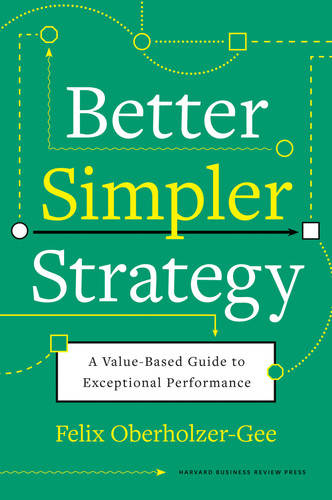Strategy is simple.
I am not sure this is the right sentence to begin this book. You—my reader—and I do not know each other, and I am concerned I may be creating a poor first impression. So let me assure you, I am not prone to making grand statements. My world—the world of rigorous academic research that helps improve management practice—is all about careful reasoning. Our sentences begin with “probably,” and our numbers come with 95 percent confidence intervals.
And yet, it is true: strategy is simple.
Seeing the simplicity in strategy is not easy. It took me many years and the guidance of great teachers and patient colleagues. Sharing the insight is possibly even harder. Fortunately, I have had much practice. I have been teaching at Harvard Business School for almost 20 years. It is a rare week when I do not have the opportunity to explore questions of strategy with executives and MBA students from around the world. What I have learned in these conversations is that it is liberating to discover the simplicity in strategy. As if by magic, you see past inscrutable business jargon and incongruent frameworks. All of a sudden, you understand how the very best companies achieve their exceptional performance and why many others fail to live up to their potential. This experience, the freedom that comes with clarity, is what I hope to share with you in this book. It is a book about the (financial) performance of companies, yes, but I have no interest in proffering a collection of success stories. Instead, my goal is to provide you with a powerful yet simple way of thinking about business and the role of strategic management.
Most books have many more authors than their covers lead us to believe. This one is no exception. I owe an immense debt of gratitude to Adam Brandenburger and Harborne W. Stuart, who developed the intellectual foundations for a theory of value-based competition.1
What author could make progress without close friends who patiently read early drafts and generously share insights? I am deeply grateful to Youngme Moon, who helped me to capture the key ideas embedded in the core framework and find my voice for the book; Frances Frei, who collaborated on an early pamphlet on value-based strategy; as well as Mihir Desai, Hong Luo, and Dennis Yao, whose analytical brilliance can sharpen any argument.2 Amy Bernstein, Claudio Fernández-Aráoz, Rebecca Henderson, Hubert Jolie, Raffaella Sadun, David Yoffie, and many of my colleagues in the strategy unit at Harvard Business School provided helpful comments. I also benefited from the help of the executive directors and researchers in the HBS Global Initiative centers around the world. Pippa Tubman Armerding, Esel Çekin, Rachna Chawla, Carla Larangeira, Pedro Levindo, Fernanda Miguel, Anjali Raina, Nobuo Sato, Rachna Tahilyani, and Patricia Thome all provided global insights and many examples of value-based strategy at work.
This book would not have been possible without the hundreds of conversations I held with executives and MBA students in my courses, in particular the participants in the General Management Program. You taught me how to think, ever more simply and effectively, about strategy and exceptional business performance. I would also like to thank Peggy Alptekin, my copy editor, who read the manuscript with exceptional care; Scott Berinato, the visual genius who brought my illustrations to life; and my editor, Jeff Kehoe, who was instrumental in moving the project across the finishing line.
Are you ready? Prepared to think? Dream? Let us begin.
